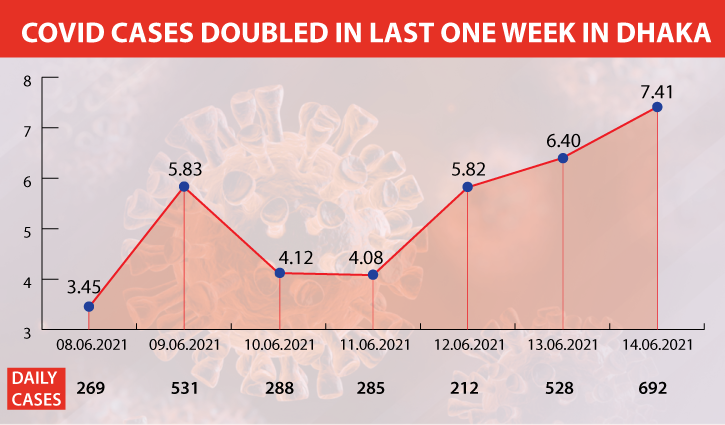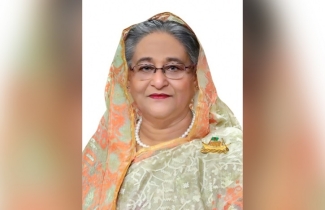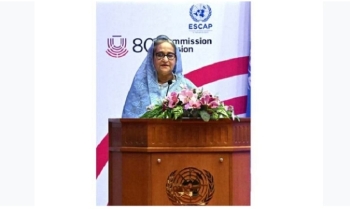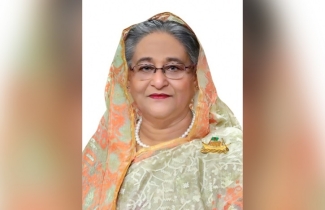Covid-19 cases rise alarmingly in Dhaka
Ainul Haque Royal || BusinessInsider

The number of new Coronavirus cases doubled in the last one week ending Monday as the infection made its social transmission from bordering towns to the capital city, according to the Directorate General of Health Services website. Photo: Business Insider Bangladesh
The number of new Coronavirus cases doubled in the last one week ending Monday as the infection made its social transmission from bordering towns to the capital city, according to the Directorate General of Health Services website.
The infection rate of the extremely lethal virus was 3.50 percent in Dhaka a week ago, but turned around 7.50 percent in the last 24 hours until Monday, according to the data available on dghs.gov.bd website.
Besides, the infection in 13 districts of Dhaka division rose to 9 percent from over 5 percent during the same period, the data showed.
Meanwhile, the authorities have dubbed a total of 45 districts including 21 bordering ones ‘vulnerable’ for contamination of the virus.
Some districts out of the rest 24 are adjacent to the Indo-Bangladesh border that signifies that the virus has started spreading gradually.
There were more Coronavirus patients in Dhaka in March last year and it spread across the country step by step. Now, the virus started spreading across the country from the peripheral areas.
Health experts believe that in absence of lockdown in highly infected bordering areas, the virus got its host around the country quite soon.
The spread of the virus could have been controlled if the lockdown had been imposed immediately in those areas in line with the recommendations of the health department.
The authorities have shown their shortsightedness while declaring the bordering areas incommunicado that resulted in aggressive contamination in other places.
On June 8, some 786 samples were tested in Dhaka and of them, 269 cases found positives for the virus with infection rate touching 3.45 percent.
On the same day, 9,051 samples were tested in all 13 districts under Dhaka division and of them, 454 were found positive and the infection rate was 5.01 percent.
On June 9, some 9,098 samples were tested in the capital Dhaka and of them 531 cases were found positive with 5.83 percent infection rate.
The health authority tested 10,357 samples on the same day and detected 727 cases positive with infection rate hitting 7.01 percent.
On June 10, some 6,975 samples were tested in the capital Dhaka and 288 cases were found positive with 4.12 percent infection rate.
On the same day, a total of 8,687 samples were tested in Dhaka division and 513 cases found positive with an infection rate of 5.9 percent.
On June 11, 6,979 samples were tested in the capital and 285 cases were detected positive, having an infection rate of 4.08 percent.
At the same time, 480 new cases were detected after testing 8,536 samples in Dhaka division and the infection rate was 5.62 percent.
On June 12, some 212 new cases were found Corona positive after testing 3,642 samples in the capital and the infection rate was 5.82 percent while in Dhaka division, 414 new cases were detected after testing 4,793 samples and the infection rate was 8.63 percent.
On June 13, a total of 8,245 samples were tested in the capital and of them, 528 new cases were found positive with 6.40 percent infection rate while on the same day, some 9,510 samples were tested out of which 667 new cases were detected with 7.01 percent infection rate.
On June 14, the health authorities found 692 new cases in the capital after testing 9,334 samples and the infection rate was 7.41 percent, besides in the Dhaka division, a total of 11,100 samples were tested and of them, 1,000 cases found positive with 9 percent positivity rate.
Talking to Business Insider Bangladesh, Prof Muzaherul Huq, former adviser to South-East Asia region of the World Health Organization (WHO) and founder of Public Health Foundation of Bangladesh, said, both the death and the infection rate will increase further if the government does not enforce stricter lockdown in highly vulnerable neighbourhoods.
Lockdown means complete halt of movement, but the government has failed to go for such moves, he said.
The dilemma is that some people are not abiding by the health guidelines and that the government is not executing any strong steps to stem the spread of the virus leading to worsening of the situation, he said.
"The government should bring the violators to book before we see a dreadful day,” he expressed his worriedness.
The government should enforce rapid antigen tests along the border and improve health service capacity to deal with the rising trend in virus infection, he added.
Responding to a query, he said people got exhausted as the government wasted time in the name of lockdown and that is why they are now defying the restriction.
The upward trend in infection is being witnessed in 45 districts, pushing the average infection rate to above 10 percent.
Considering the infection rate, the government has divided the districts into A, B and C categories.
Some 30 to 40 percent infection rate was seen under 10 A category districts in the last week, 21 to 29 percent under 14 B category districts and 10 to 20 percent in 21 C category districts, respectively.

































